Druidstone: The Secret of the Menhir Forest Review
From a grim rock to a druid’s stone.
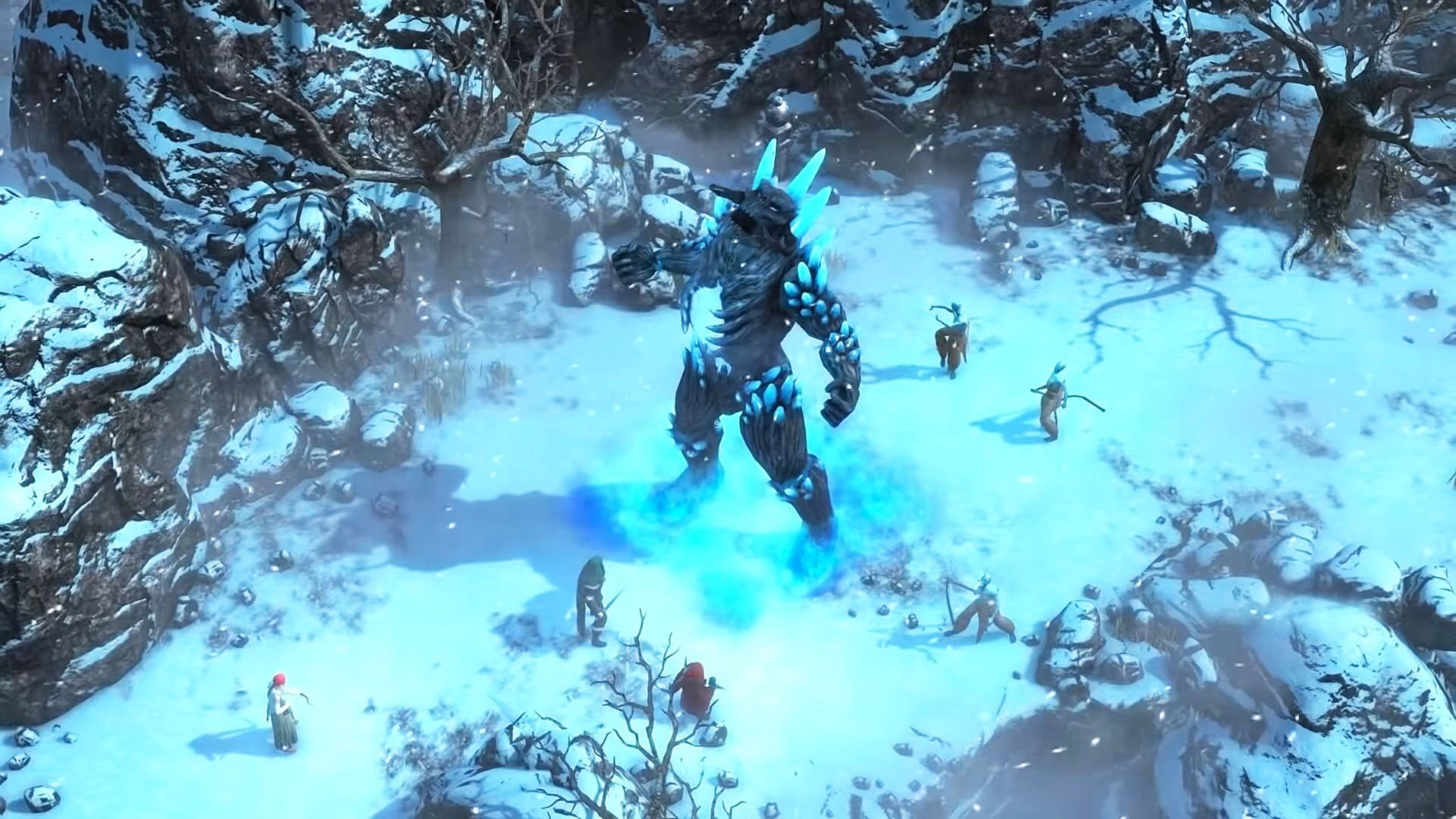
Following 2014’s Legend of Grimrock 2, Almost Human disbanded and reformed as Ctrl Alt Ninja. The talent behind the fantastic dungeon-crawler RPG series returns with a challenging tactical RPG in the vein of Divinity: Original Sin. Druidstone: The Secret of the Menhir Forest marks a significant departure for the team, whilst also remaining somewhat familiar. The essential fantasy setting is here, but the experience is a much more combat-focused affair.
The setup is pretty straightforward: the Warden – a supposed protector of the forest – hatches from a cocoon. Unsure of his identity and surroundings, he must work together with his newfound companions to slay an evil sorceress and stop a maniacal cult called the Red Priests. It’s a pretty standard fantasy affair, but the breezy tone helps keep things interesting. The writing is brief but sharp, making it all the more disappointing that it isn’t voiced.
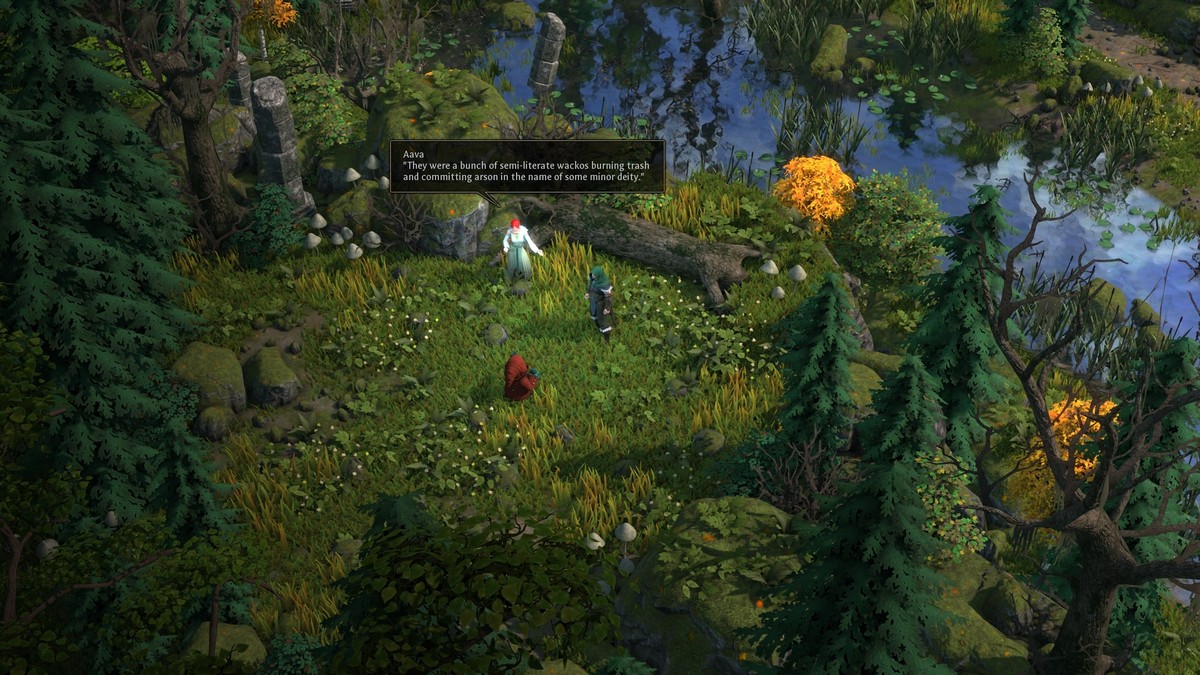
Druidstone’s turn-based combat is challenging and rewarding. It’s grid-based, granting you control of three very different characters. You progress through the story by tackling missions from a world map. These stages are brief and tight, each providing a unique challenge. Most are combat-oriented, but a handful of puzzle-focused scenarios are present to offer a nice change of pace.
Operating on a dual Action Point (AP) system – with one pool for one movement and another for action – the combat lets you be fairly mobile. You can attack and move freely within a turn, allowing for more versatile approaches. It creates opportunities to play dangerously, presenting exciting situations like moving to a compromising position, attacking a foe, and then diving to cover. Every counter is tense and dynamic and it’s often hard to predict where a fight will end up.
Druidstone is a hugely demanding game. It’s tough, unforgiving, and demands a lot of focus. The odds are nearly always stacked against you. You’re constantly outnumbered and many stages will continue to send enemies your way if you take too long. Most of the time, it’s pretty unfair. You’ll have to stay on your toes to survive.
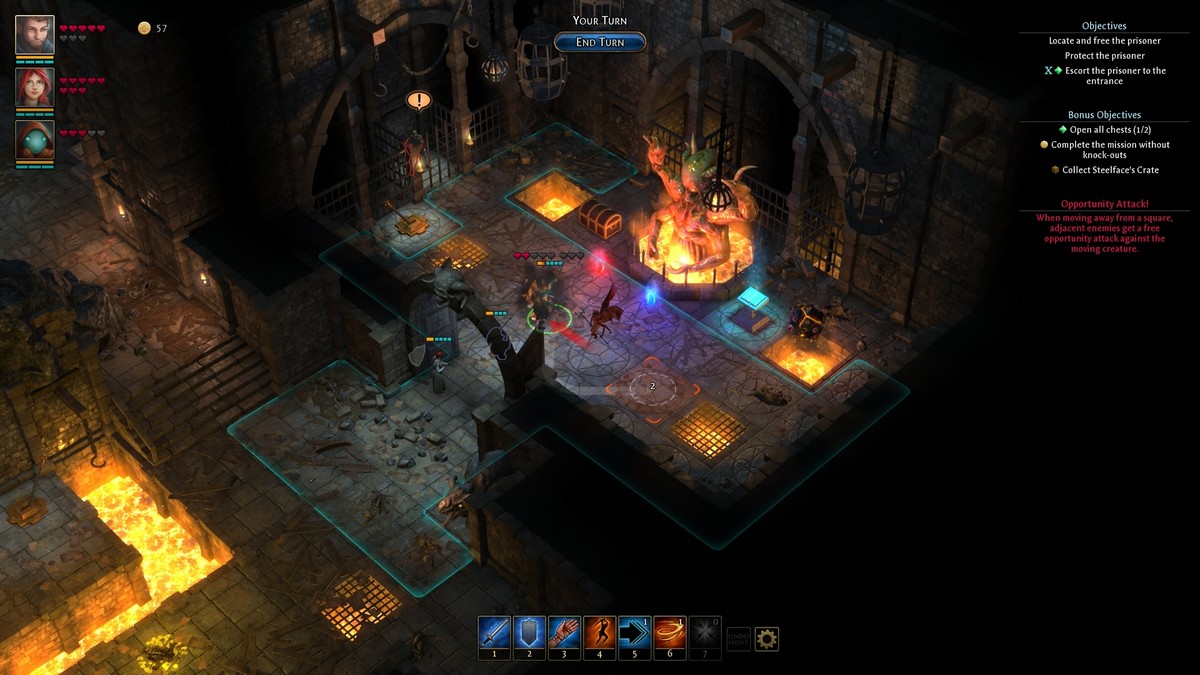
Druidstone is about efficiency. It’s about pulling off the cleanest and most carefully planned turn. Fights won’t last long if you rush in head-first. The bonus objectives found in each mission only further emphasize this fact. These optional quests offer enticing rewards for accomplishing tricky feats, like acquiring every chest in the level or suffering no casualties. Chasing these challenges and discovering the optimal way through a mission is immensely satisfying. It turns the flow of combat into a deeply engrossing and complex game of chess, where one wrong move could mean the end.
Some bonus objectives unlock new items in the shop accessible between missions, whilst others provide money or gems – essentially, skill points. They’re fun to go after and serve to highlight Druidstone’s tight level design. The added replayability of nailing every bonus objective can make Druidstone quite a lengthy experience.
Attaining 100% in a mission requires near flawless execution. There’s a tense avalanche effect that comes with screwing up. One mistake can have disastrous consequences. Mastering a mission can take many attempts, and you’ll know the level inside-out by the time you nail it. It’s very rewarding to finally conquer a challenge that’s been giving you a hard time.
The combat flows at a snappy pace, thanks to the hastened speed of animations. Heroes and enemies zip around the battlefield at a frankly ridiculous speed. It means you’ll never be sat around for five minutes watching a group of enemies slowly take their turns. Throwing out commands is also quick and easy, allowing you to race through the nitty gritty and focus on the bigger picture of your combat strategy.
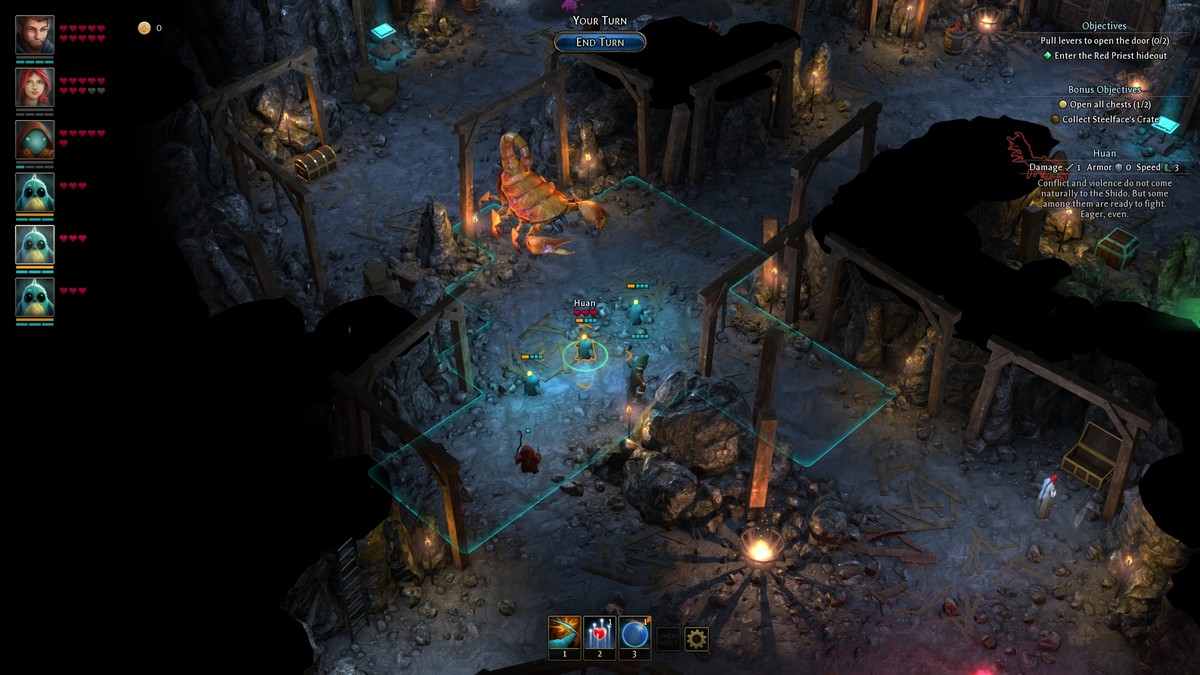
Characters each have their own progression of levels, gear, and abilities. Equipment and abilities can be customized and upgraded in-between missions. Gold buys you shiny new gear, whilst abilities are acquired as you level up. Upgrades may feel minor at first, but they make a big difference. There’s a satisfying power curve throughout the story, making you genuinely feel stronger and more capable the more you play.
Gems are the most important part of your customization, however. Gems earned during missions allow you to enhance abilities and equipment. They’re a finite resource, and each one is a valuable prize, so where you choose to slot them is critical. They’re also shared across your party, so you’ll want to be sure to spread them out evenly.
Gems aren’t consumed when slotted. They can be mixed and matched and moved about however you like. The more potent upgrades require multiple gems, whilst others increase in potency or quantity depending on how many gems are slotted into it. It’s a neat system that creates a lot of depth and versatility.
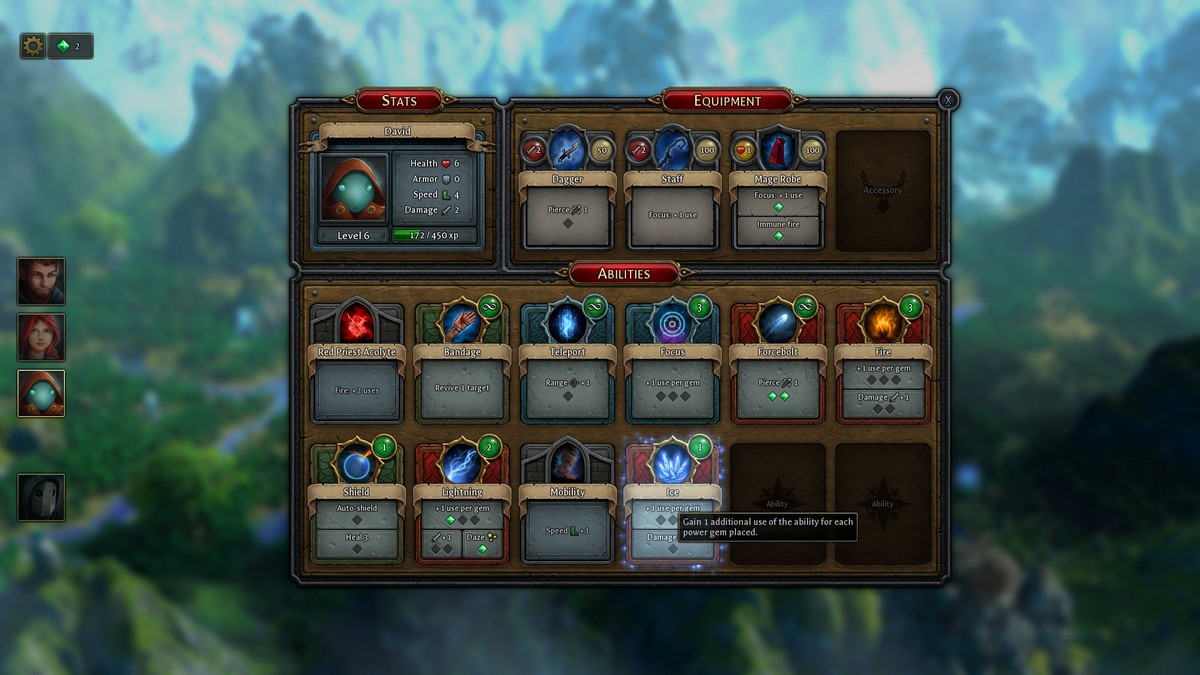
Aesthetically, Druidstone is quaint. Pretty speech bubbles appear before and after battles, providing context and establishing a light-hearted tone. The art is colorful and vibrant, with varied environments and high-quality monster designs. Meanwhile, a fun and jaunty soundtrack accompanies the action, evoking plenty of fantastical vibes and occasionally dipping into Final Fantasy territory with wild boss music. It all comes together to form a charming and endearing package.
Ultimately, Druidstone is a challenging and rewarding tactical-RPG with plenty of charm to keep it engaging in-between brutally tough encounters. It can border on unfair at times, but the steady stream of progression and versatile combat ensures it remains satisfying. Ctrl Alt Ninja clearly demonstrates their development expertise with this finely tuned and tightly crafted adventure that’ll have you brainstorming turns for hours.
[Reviewed on PC]
